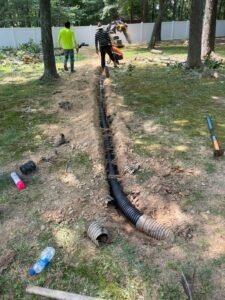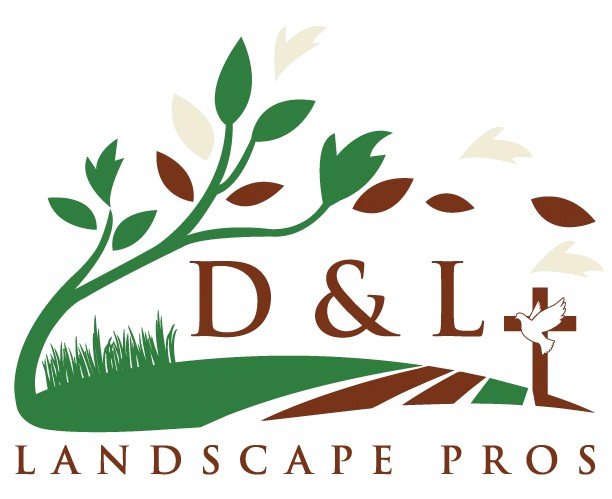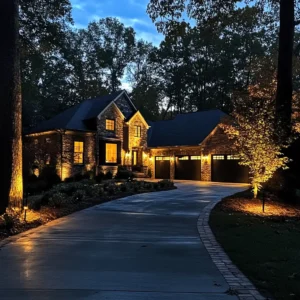
When water isn’t draining properly in your yard, it can do more than just make a mess—it can cause serious and expensive damage to your home, lawn, and landscaping. The challenge is that not all drainage problems are easy to see at first. Many start small, developing quietly beneath the surface until they lead to bigger issues like foundation cracks, dead grass, or pest infestations.
At D & L Landscape Pros, we’ve helped homeowners across Monroe, Matthews, Waxhaw, and Indian Trail identify and resolve hidden drainage issues before they become major headaches. In this post, we’ll break down the most common signs of hidden drainage problems, where to look, and what to do if you think your yard may be at risk.
Why Drainage Matters
Proper yard drainage helps:
- Protect your home’s foundation
- Maintain healthy grass and plants
- Prevent erosion
- Reduce mold and mildew
- Keep pests like mosquitoes from breeding
Without an effective drainage system, even a moderate rainstorm can lead to costly problems over time. That’s why early detection is so important.
1. Soggy or Spongy Spots in the Lawn
One of the earliest signs of a drainage issue is a soggy, soft, or “spongy” area in your yard—even days after it rains. This usually means water isn’t being absorbed or directed away properly.
What to watch for:
- Water pooling in low areas
- Grass that feels squishy when you walk on it
- Mushrooms growing in certain spots
These spots may seem harmless, but they often signal that the soil is compacted or oversaturated—both of which can kill grass and contribute to root rot or fungal growth.
2. Water Pooling Near the House
If you notice water collecting around your home’s foundation, that’s a major red flag. Water pooling close to the house can seep into the basement, erode your foundation, or cause interior water damage.
Look out for:
- Damp basement walls or musty odors indoors
- Standing water at the base of your siding
- Soil washing away near the foundation
This is a clear sign that your grading or gutter system may not be doing its job—or that your yard needs drainage intervention.
3. Erosion or Washed-Out Areas
Water that’s not draining properly can carry away soil, mulch, or gravel, especially after heavy rain. Over time, this leads to uneven surfaces and exposed roots.
Signs include:
- Bare patches where grass won’t grow
- Ruts or channels in the soil
- Tree roots or plant bases exposed
This kind of erosion can be dangerous to plants and hardscaping, and it’s often a sign that you need grading correction or a drainage system like a French drain.
4. Overflowing Gutters and Downspouts
Your gutters and downspouts are your home’s first line of defense against drainage problems. If they’re clogged, damaged, or not positioned correctly, they can dump water directly onto your lawn or foundation.
Check for:
- Water spilling over the edge of the gutters
- Downspouts that drain too close to the house
- Soil or mulch displaced under the downspout
Sometimes, simply extending a downspout further away from the home can help, but more often, this overflow is part of a larger issue that needs attention.
5. Cracked Driveways, Sidewalks, or Foundations
Over time, standing water or poor drainage can seep under concrete and cause it to shift or crack. These cracks aren’t just cosmetic—they can be signs of deeper structural issues.
Inspect for:
- New or widening cracks in concrete
- Uneven pavement
- Water stains on basement or garage walls
If you see any of these, especially after a period of rain, it’s time to schedule a professional evaluation.
6. Signs of Mold, Mildew, or Pests
Poor drainage creates the perfect environment for mold and mildew—especially in shaded, damp areas near your home. You might also notice an increase in mosquitoes, ants, or other pests.
What to notice:
- Musty smells in crawl spaces or basements
- Mold on outdoor walls or foundation
- Pools of water where mosquitoes are breeding
These issues aren’t just annoying—they can affect your family’s health and comfort and should be addressed quickly.
7. Trouble Growing Grass or Plants
If certain parts of your yard never seem to thrive—no matter how much you water, fertilize, or reseed—the issue could be too much water.
Common signs include:
- Yellowing or thinning grass
- Root rot in flower beds
- Patches that stay muddy while the rest of the yard dries
Healthy lawns need a balance of moisture and air in the soil. Oversaturated areas can suffocate roots and make it impossible for your landscape to thrive.
What Causes Hidden Drainage Problems?
There are several common causes of drainage issues in North Carolina yards:
- Poor grading or uneven slope
- Compacted clay soil (very common in the Monroe/Waxhaw area)
- Clogged or poorly placed gutters and downspouts
- Runoff from neighboring properties
- Lack of or outdated drainage systems
At D & L Landscape Pros, we inspect each property individually to determine the exact cause and recommend the right fix—whether that’s regrading, adding a French drain, or redirecting runoff.
What You Can Do About It
If you’ve spotted one or more of these signs, it’s time to take action. Here’s what we recommend:
- Walk your property after the next heavy rain and look for problem areas.
- Check your gutters and downspouts to ensure they’re clean and flowing properly.
- Call in a professional for a drainage evaluation. Don’t wait for the problem to get worse.
Our team offers free consultations across Monroe, Matthews, Indian Trail, and Waxhaw. We’ll identify the source of the issue and explain your options—no pressure, just clear advice from people who know the local landscape.
Final Thoughts: Don’t Wait for the Damage
Drainage problems rarely fix themselves. In fact, the longer they go unchecked, the more damage they can do to your home and landscape.
If you’re unsure whether your yard has a drainage issue, trust your instincts—and trust the professionals at D & L Landscape Pros. We’ve seen it all, and we know how to protect your property before it’s too late.
Contact us today to schedule your free drainage inspection and get ahead of hidden water problems. Your lawn—and your home—will thank you.




